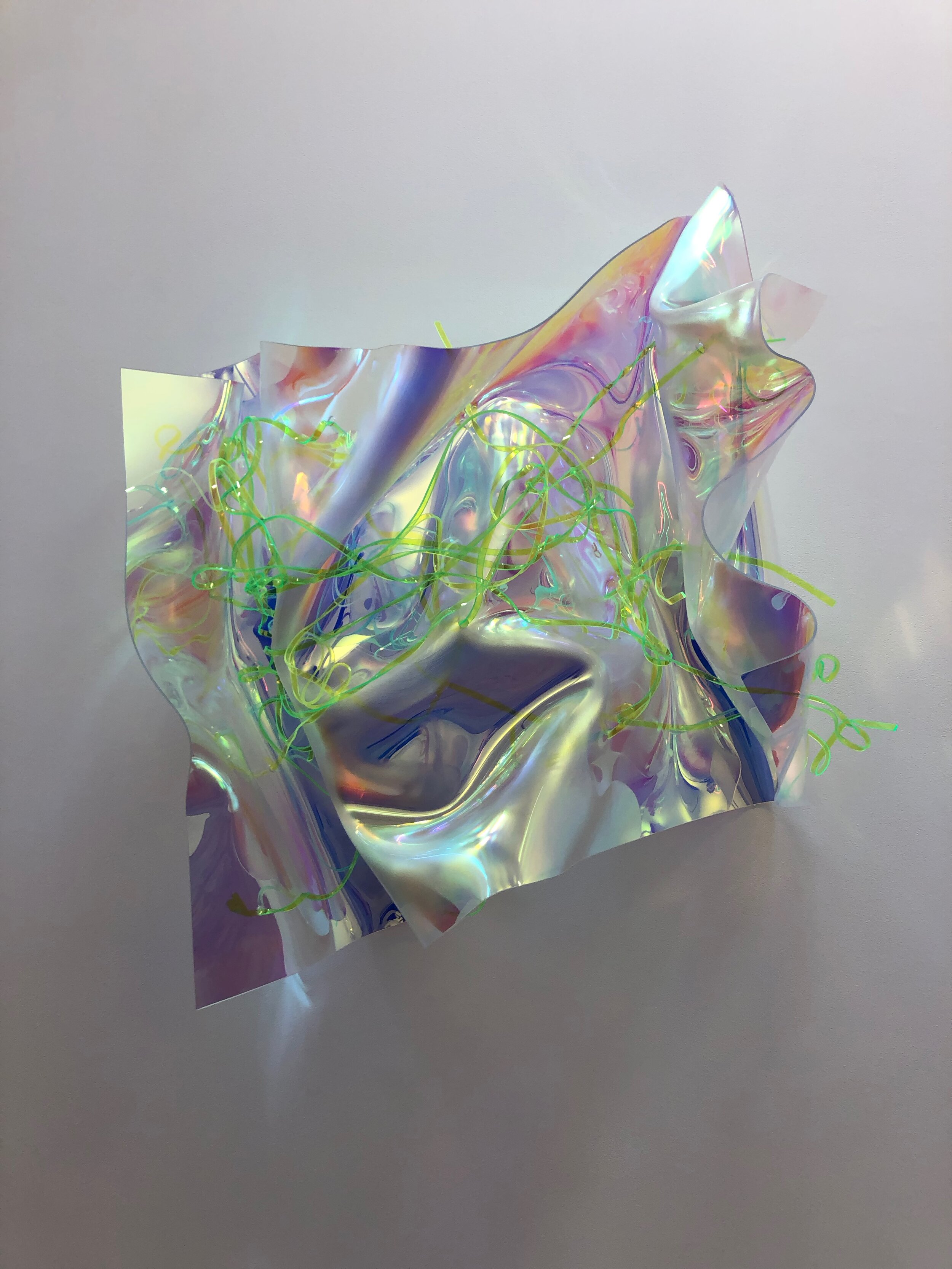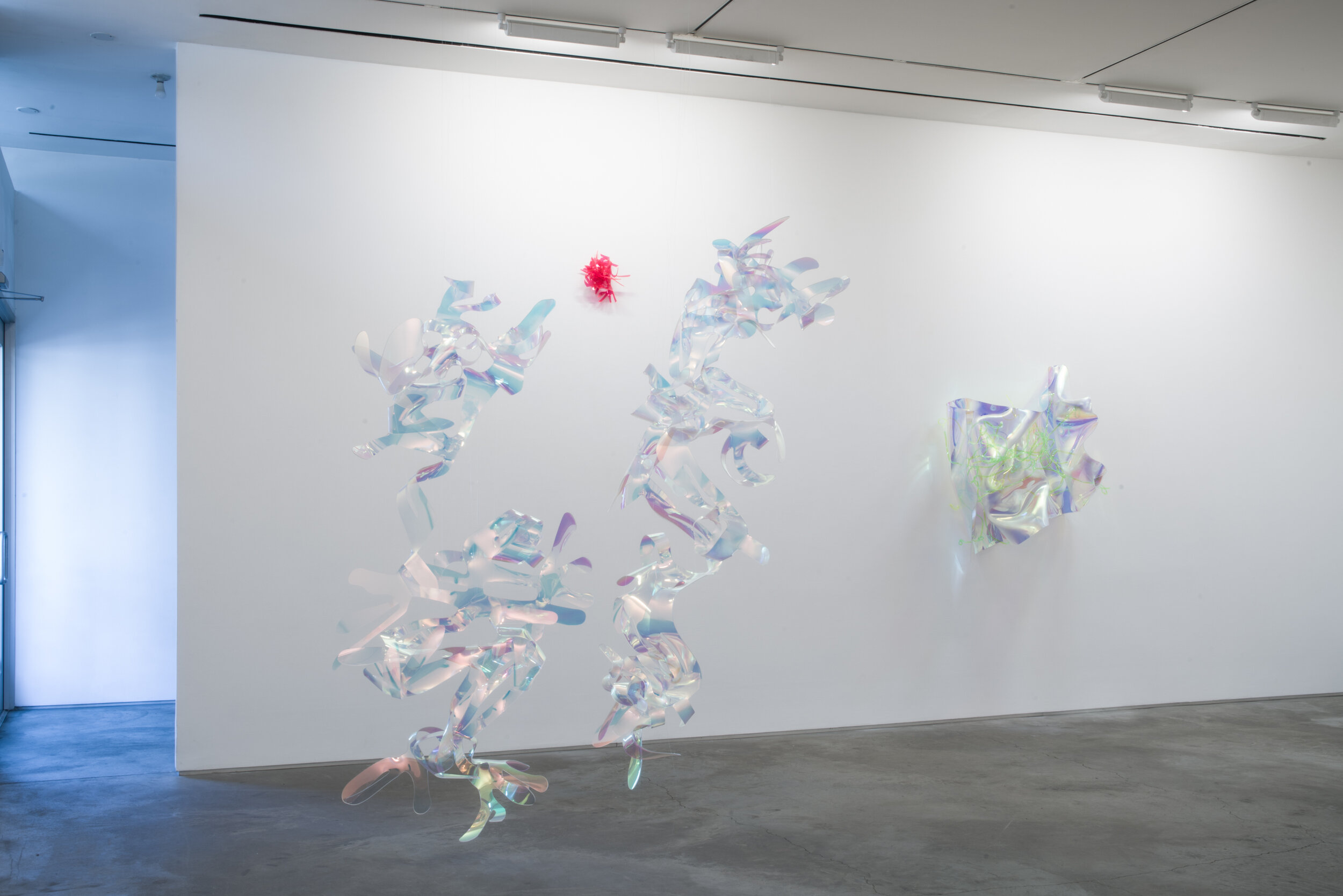Hiroxi, Ubix, Orbis Tertius
Berta Fischer at James Fuentes, LLC
Other worlds are held in suspension in Berta Fischer’s second solo show at James Fuentes. Reflective sheets of acrylic glass have been cut and crumpled, like discarded tinsel or shiny Christmas bows. They hang from the walls or float, attached by fishing line to the ceiling.
Hiroxi, 2019
Some are more abstract than others––Hiroxi cradles within it a tangle of neon green, while high on the wall next to it (placed in the way of some of Louise Bourgeois’s spiders) is Ubris, a red blob of tentacles, almost like a sea anemone. In Ubix, two intersecting planes of colored string are delineated by neon ropes, plugged in to a nearby outlet.
Ubix (2017) . Courtesy of James Fuentes LLC. Photographed by Jason Mandella.
As John Chamberlain is often evoked in relation to Fischer’s work (including in this show’s press release), you would be forgiven if you suggested his contemporary Dan Flavin (perhaps the most famous artist associated with fluorescence) when approaching it. I, however, find neither artist to be relevant to Ms. Fischer’s work, as form here is less relevant than color and light, and crumpling seems to be a means to an end and not the essence of these sculptures. Oddly (and please forgive me for writing this), I’d sooner suggest Jeff Koons as a comparison, based on the way light bounces around both artists’ finished surfaces. But a more apt comparison is to the painter Mary Weatherford, an artist who attaches lengths of flexible neon cords to her large abstract expressionist canvases.
Petutula, Ubris, and Hiroxi. Courtesy of James Fuentes LLC. Photographed by Jason Mandella.
However, where Weatherford’s neons make swaths of unhemmed color that wash over the painting to which they are affixed, it is unfortunate that these lines in light highlight the support from which the work is suspended––the light glints off of the many, many strings of fishing line that keep this work in place, distracting from the presence of the piece itself. (In fact, fixtures and supports are often too visible here––the brackets anchoring the candy-colored Sokal to the wall detract from the sculptures’ lightness.)
Sokal, 2018
The neon, however, is a handy metaphor for what makes this show so unusual, as the same glowing effect is achieved in a number of other works on view, though without the aid of electricity. In Sokal, for example, when viewed straight on the edges of these colored transparent sheets catch and concentrate light so that they appear to glow.
It is here, however, where Fischer’s similarities to Koons abruptly end, as her works are not simply surface. The dimensions of the acrylic glass sheets, which are less than a quarter inch thick, make all the difference, and are perhaps why these works feel static when approached. It is not just that their installation has been labored over (if you look hard you can see the tens of strings anchoring these works in their inert suspension) which ensures that these sculptures do not so much as quiver in a passing breeze, but that the quality of their material seems to capture light before reflecting it. Walk around them, and their surfaces change languidly, as if the world is happening within them––they are not creatures from another universe, but rather contain universes inside themselves.
James Fuentes
Until September 15




